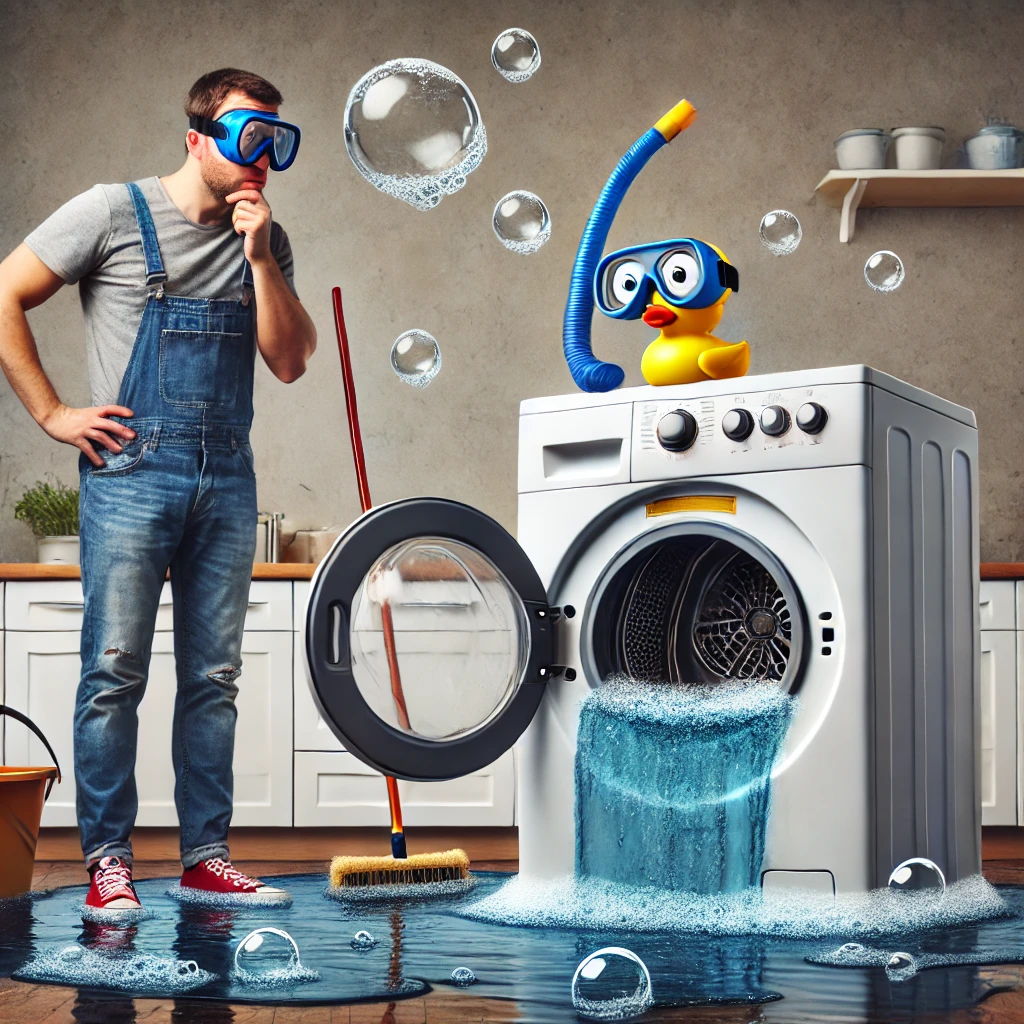If you’ve noticed water pooling around your dryer, you might be surprised—after all, dryers are supposed to deal with heat, not water! A leaking dryer can indicate underlying issues that need immediate attention to avoid damage to your home and appliance. In this guide, we’ll explore the common causes of water leaks in dryers, practical solutions, and tips to prevent future problems.
Common Causes of a Dryer Leaking Water
- Clogged Dryer Vent or Exhaust Duct
- Blockages in the vent trap moisture inside the dryer, causing water to drip from the dryer or vent connection.
- Solution: Clean the dryer vent thoroughly to remove lint buildup, ensuring airflow. Regular cleaning every 6–12 months prevents clogs.
- Condensation in Vent Pipe (for Ventless or Long Ducts)
- In colder environments, moisture in the air can condense inside a metal exhaust pipe, forming water droplets that leak out.
- Solution: Use insulated vent ducts to prevent condensation buildup. Ensure the dryer room is properly ventilated.
- Faulty Ventless Dryer Condensation System
- If you have a ventless dryer, the condenser system may malfunction, causing excess moisture to accumulate and leak.
- Solution: Check the water collection reservoir or condensation system for any blockages. Clean or replace faulty parts as needed.
- Improper Dryer Installation
- Incorrect venting angles or kinks in the duct can trap moisture, leading to water leaks.
- Solution: Ensure the vent ducts are properly aligned with no bends or blockages. Hire a professional if you are unsure about the installation.
- Excess Humidity in Laundry Room
- If the laundry room has high humidity, moisture may appear as condensation on or inside the dryer.
- Solution: Use a dehumidifier or improve ventilation to reduce humidity levels.
How to Fix a Dryer That’s Leaking Water
- Inspect and Clean the Vent System
- Disconnect the dryer from the wall and check the vent for obstructions. Clean the exhaust hose thoroughly using a vent brush.
- Ensure the vent exit outside the house is free from debris.
- Check for Condensation in the Ducts
- If your dryer uses a long duct system, inspect for condensation buildup. If necessary, switch to an insulated duct.
- Monitor the Water Collection Tray (for Ventless Models)
- Make sure the water reservoir or drain hose (if connected to a drain) is not blocked. Empty the reservoir regularly.
- Improve Ventilation
- Install exhaust fans or open windows to ensure proper airflow in your laundry room.
Tips to Prevent Dryer Water Leaks
- Regular Vent Cleaning: Schedule routine cleaning every 6–12 months to prevent lint buildup that can block airflow.
- Use Short, Insulated Ducts: This reduces the chance of moisture condensation in exhaust pipes.
- Keep the Laundry Room Ventilated: Use dehumidifiers to keep humidity levels low, especially in small laundry rooms.
- Inspect the Condensation System (for Ventless Dryers): Make sure the system is working correctly and the water tank is emptied regularly.
When to Call a Professional
If you’ve tried troubleshooting but the problem persists, it might be time to call in a professional technician. At ZapFixers, we have years of experience diagnosing and repairing dryers. Our team will inspect your dryer system thoroughly and get it back to working efficiently in no time.
Conclusion
A dryer leaking water might seem unusual, but it’s often related to airflow problems, condensation, or high humidity levels. With proper maintenance and ventilation, you can prevent leaks and ensure your dryer runs efficiently. If you’re facing persistent issues, don’t hesitate to contact a professional for help—your dryer and home will thank you!
